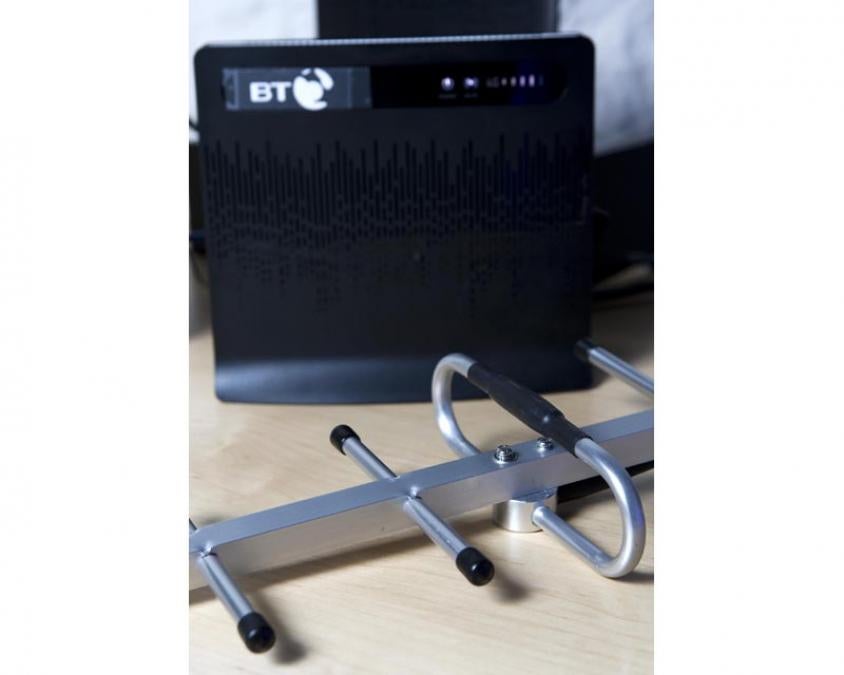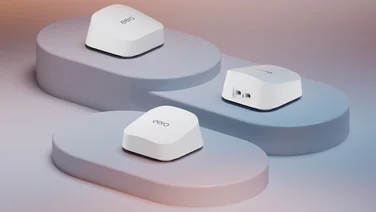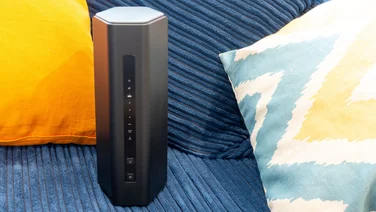To help us provide you with free impartial advice, we may earn a commission if you buy through links on our site. Learn more




Addressing rural broadband issues has been tricky, as fixed infrastructure has been considered too expensive, while mobile technology has lagged behind in both coverage and reliable speeds.
Down in Cornwall a different future is being investigated and we were on-hand in St Newlyn East to get a first-hand look at the Long-Term Evolution (LTE) wireless trial operated jointly between BT and Everything Everywhere.
LTE, or 4G as its more commonly known as, is the next evolution of mobile data, promising better coverage and faster data rates, with the benefits of using existing infrastructure.
Down in Cornwall it’s currently being investigated for two potential uses. First, as you’d expect, is mobile data using USB dongles. Secondly, is fixed infrastructure, using a BT hub that’s permanently connected to the LTE network, sharing the connection via Wi-Fi and Ethernet ports.

Speed demon
Initial results from the trial have been promising. Sat 5km from the nearest mast, in the National Trust property Trerice, we saw live demonstrations of the network running at between 6.83Mbit/s and 20.55Mbit/s, as measured by www.speedtest.net. This setup used a hub with an external aerial to improve reception and speed.

As this is a live network and connections aren’t capped, this kind of variation is to be expected. Even so, the low-end of the connection speed is a fairly average entry-level broadband connection in an area with fixed broadband.
Higher speeds are potentially possible, but turning up the speed can reduce reliability for some people. During the trial BT and Everything Everywhere discovered that most people wanted a consistent and reliable speed, over the
One of the benefits of LTE is that the speed drop off is slow the further you get to the edge of the cell.
“It’s a slow drop off, with many people on the trial getting 8Mbit/s, but people a fair way away from the antenna are getting 4-to-5Mbit/s,” said Dave Axam, director of business development at BT Wholesale.
Part of the reason for this is that LTE is more dynamic than 3G, able to alter it signal to deal better with transmissions at distance.
While these trial speeds may not match the 30Mbit/s the European Commission has said is required by all surfers, the fact is that it’s a big step up from the very poor speeds that some people in rural locations are getting.
For many the change is dramatic. Hailey Gaffney of Quintrell Downs in Cornwall has been trialling the LTE service since it launched, giving her a broadband speeds a boost from 1.53Mbit/s to more than 11Mbit/s.
“It means I can work from home, watch TV on demand and upload photos and videos to Facebook,” said Gaffney.
Quick reactions
The other issue with most mobile networks is latency: the time taken to send a packet and get a response back. The higher the latency on the connection, the slower websites are to respond. It also makes using services that require quick response times, such as multiplayer gaming, very difficult.
With the LTE network, latency is much lower. As with the speed, the latency, as measured by a ping test, depends on how many people are using the network and the type of the connection. In live demonstrations, we saw ping times of sub 30ms (decent enough for gaming) using a 4G dongle. Using a laptop connected via Wi-Fi to a hub, we saw ping times of 69ms. Again, it’s still pretty decent and all but the most avid of online gamers would be happy with that.

What’s the frequency Kenneth?
Key to the success of the trial is the frequency used by the 4G trial network: 800MHz. This low frequency transmission gives range and the ability to punch through objects, including thick walls, which becomes important in rural locations. That’s not to say it gives 100 per cent coverage, but more that it reduces the number and size of pockets that don’t have any reception now.
By comparison, high frequency data, such as that in the 2.6GHz band gives more capacity at the reduction of range, making it better suited to suburban areas.
The problem with this currently is that the 800MHz band has to freed up by turning off analogue TV country-wide and then auctioned off. With the auction not planned until Q4 2012, it’s unlikely that a rural 4G network can be rolled out until 2013 at the earliest.
There’s also another issue with the spectrum and the way it’s allocated. At the moment, O2 and Vodafone currently have the 900MHz band, giving them an early advantage in 4G. With any auction, BT and Everything Everywhere hope that it will also level the playing field.
“What we want to do is rebalancing,” said Paul Coffey, head of strategic development at Everything Everywhere. “Everything Everywhere should have access to 800MHz.”
We can’t help but agree that any new spectrum should be shared fairly to give consumers real choice. That includes making sure that Three, the smallest network, also has a fair share of the 800MHz band.
The cost of progress
One of the biggest barriers to success is going to be cost. The trialists we spoke to were definite on the point that the service had to carry a similar price as existing broadband.
“We already pay the same to get less,” Gaffney said of existing broadband services in Cornwall. “If it was much more expensive I wouldn’t pay for it.”
It’s something that BT and Everything Everywhere seems to understand, which is why the companies are partnering to create the 4G network, sharing resources as much as possible to keep the costs down.
So, for the trial existing mobile antennas were used, with an existing fibre link into the BT 21CN network. The system can then send data on to the right data centre (Ipswich for BT, Bristol for Everything Everywhere), based on its source (fixed or mobile). It’s cost savings such as this that could make the difference.
“We have to get the economics to work,” said Coffey. “We won’t be putting any or many new sites.”
In terms of economics this partnership could well be essential to rural broadband. The biggest issue with rolling out new mobile networks is that the infrastructure is usually placed in big cities first, as the high population density guarantees bigger returns on investment. With BT and Everything Everywhere offering two different services through the 4G network, it could make it more financially viable.
Next steps
Currently BT and Everything Everywhere don’t have a deal in place to start selling 4G services, because there isn’t the spectrum to support it. It’s going to take the auction to go through successfully and costs to be fully worked out to move things forward.
Hopefully, this can be done. From what we’ve seen, 4G provides a real alternative to fixed broadband at sensible speeds that people can easily live with. With the trial ending in January 2012 it would be a shame if rural communities had to wait for more than a year to get these services back. As one trialist succinctly put it: ““I’ll probably need psychological counselling when you take these boxes out.”






